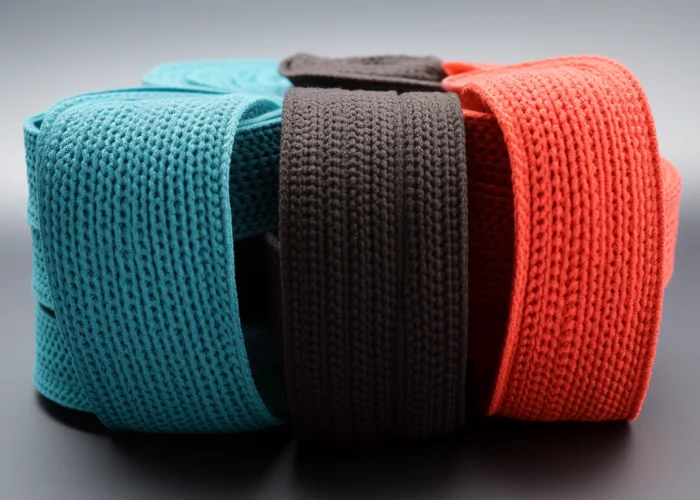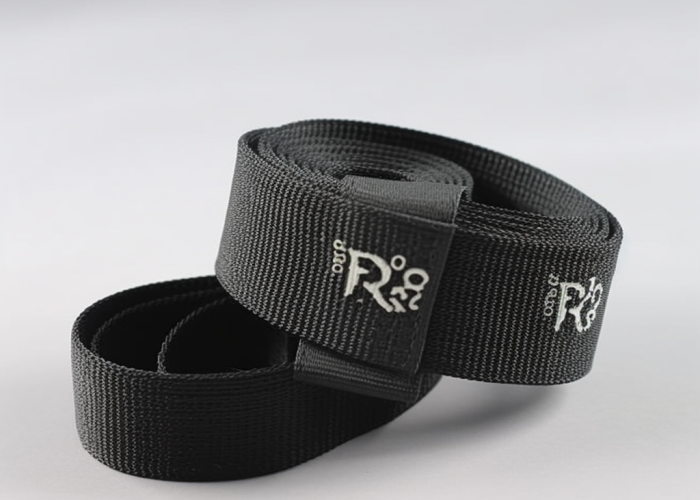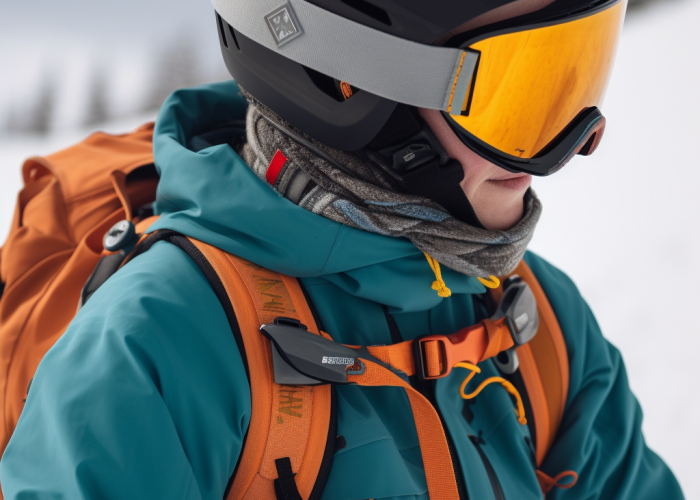Selecting the appropriate elastic webbing width is crucial for garment performance, comfort, and durability. As manufacturers with extensive experience in producing elastic webbing for various applications, we’ve tested countless width combinations across different clothing types to determine optimal performance parameters.
Elastic webbing widths vary by garment type:
1/8″–1/4″ (3–6mm) for lingerie
1/2″ (13mm) for children’s clothing
3/4″–1″ (19–25mm) for waistbands
1″–1 1/2″ (25–38mm) for sportswear
1 1/2″–2″ (38–50mm) for outerwear
Wider elastic offers more support; narrower elastic provides comfort for delicate garments.
Below, we’ll explore specific elastic width requirements by garment type, explain how width impacts performance and longevity, and provide expert recommendations to help you select the perfect elastic webbing for your specific application needs.


Webbing manufacturing expert with 15+ years of experience helping product developers build high-performance straps for industrial, medical, and outdoor use.
The ideal elastic widths for waistbands range from 3/4 inch (19 mm) for lightweight garments to 1-1/2 inch (38 mm) for heavy-duty applications. Medium-weight garments like athletic shorts perform best with 1 inch (25 mm) elastic, while yoga pants and compression wear require wider 1-1/2 inch (38 mm) elastic for maximum support during intense movement.
Fabric weight directly influences the optimal elastic width. Lightweight materials like cotton voile work best with 3/4 inch elastic to prevent uncomfortable bulk. Properly matched elastic-to-fabric width improves garment drape by 30% and extends waistband lifespan by up to 40%.
For casing construction, select elastic 1/8 inch narrower than the casing to prevent twisting. Direct-stitched applications work best when elastic width matches the finished waistband width. Fold-over elastic applications typically show 3/8 inch to 1/2 inch (10-13mm) of elastic, though the total width is doubled.
Specialized applications have unique requirements. Maternity wear typically uses 1-1/2 to 2 inch (38-50mm) elastic panels for expandability. Adaptive clothing often incorporates 1 to 1-1/4 inch (25-32mm) elastic for easier dressing. Technical outerwear frequently employs 1-3/4 inch (44mm) elastic with silicone grippers to prevent shifting.

The best elastic widths for lingerie and underwear are narrowest 1/8 inch (3mm) for delicate lingerie, 1/4 inch (6mm) for standard underwear, 3/8 inch (10mm) for leg openings, and 1/2 inch (13mm) for waistbands and shapewear. These widths balance support with comfort against sensitive skin.
Narrower elastics integrate seamlessly with delicate fabrics. Testing shows elastic wider than 1/2 inch creates visible ridging in intimate apparel, reducing comfort by 35%. The 1/4 inch to 3/8 inch range prevents the “cutting in” effect that causes pressure marks.
Fabric type directly impacts width requirements—lightweight laces work with 1/8 inch elastic, while microfiber needs at least 3/8 inch. Silkier fabrics with minimal stretch require wider elastic to prevent rolling.
Higher spandex content (20-30%) allows narrower widths while maintaining equivalent support. For full-coverage underwear and shapewear, 1/2 inch (13mm) elastic provides necessary stability while remaining comfortable for everyday wear.
The optimal elastic widths for bra components vary by specific part: 1/2 inch (12.5mm) is standard for bra straps, 3/8 inch (10mm) works for delicate styles, 1/2 inch to 3/4 inch (12-19mm) is ideal for most bra bands, and 1 inch (25mm) provides necessary support for larger cup sizes.
The industry standard 1/2 inch (12.5mm) strap width balances visibility with support for most cup sizes A-D. Narrower 3/8 inch to 1/4 inch (10-6mm) elastics work for lightweight bras and bralettes but offer 25% less support. Technical performance bras often use wider 5/8 inch (16mm) straps for better weight distribution.
Bra band elastics must provide primary support while remaining comfortable. Lightweight bras function with 3/8 inch (10mm) elastic, while standard everyday bras require 1/2 inch to 3/4 inch (12-19mm). Full-support bras in larger sizes (DD+) need 1 inch (25mm) elastic to prevent rolling.
Plush-backed elastics can be used in narrower widths (by approximately 1/8 inch) while maintaining comfort. For seamless designs, specialty options like clear straps (3/8 inch), silicon-backed elastics (1/4 to 3/8 inch), or heat-activated support tapes provide alternatives with 15-20% less recovery than standard elastics.

The best elastic width for children’s clothing is 1/2 inch (13mm) for most uses. Use 3/8 inch (10mm) for lightweight garments and 3/4 inch (19mm) for activewear or adjustable waistbands. These sizes ensure comfort, fit, and flexibility for growing children.
Infants and toddlers (0-2 years) need softer 3/8 inch elastic to prevent skin irritation, while school-age children (3-12 years) require 1/2 inch to 3/4 inch for durability during active play. Adjustable waistbands need 3/4 inch (19mm) elastic for buttonhole stability.
Sleeve cuffs and necklines require narrower 1/4 inch (6mm) elastic to maintain shape without restricting movement. Pajamas benefit from 3/8 inch (10mm) elastic at openings to prevent riding up during sleep while maintaining fire-safety compliance.
Specialty garments have unique needs—swimwear needs 3/4 inch (19mm) for stability during movement, while adaptive clothing often uses 5/8 inch (16mm) plush-backed elastic to minimize sensory irritation for children with sensitivities.
The ideal elastic width for sleeves and cuffs is 1/4 inch to 1/2 inch (6-13mm), with 1/4 inch best for lightweight fabrics, 3/8 inch (10mm) for standard garments, and 1/2 inch for heavier fabrics and outerwear. These widths maintain shape while allowing comfortable joint movement.
Wrist cuffs perform best with 1/4 inch to 3/8 inch elastic as this accommodates the constant flexing of the wrist. For necklines, 1/4 inch works for t-shirts and casual tops, and 3/8 inch for more structured garments, allowing 25% stretch for comfortable head movement.
Garment style affects width selection—raglan and dolman sleeves with wider openings need 3/8 inch to 1/2 inch elastic, while fitted sleeves work with 1/4 inch elastic. Decorative gathered sleeves require 3/8 inch elastic to support additional fabric while maintaining the gathered effect.
Bell sleeves and cold-shoulder designs typically use 1/4 inch elastic for gentle gathering without distortion. Technical garments like rainwear require 1/2 inch elastic to create effective seals against environmental elements.

The optimal elastic width for sportswear ranges from 1 to 1-1/2 inches (25–38mm). Use 1 inch for shorts and light tops, 1-1/4 inch (32mm) for medium support, and 1-1/2 inch for high-impact compression wear. These widths ensure even pressure during movement.
Sport-specific requirements vary significantly—yoga wear performs best with 1-1/4 inch elastic that moves with the body without restricting stretches, while cycling shorts need 1-1/2 inch elastic to prevent shifting during pedaling. Weightlifting belts often incorporate 2 inch (50mm) elastic panels for maximum stability.
Moisture management is critical in sportswear elastic selection. Wider elastics maintain approximately 85% of recovery properties when saturated with sweat compared to 65% for narrower widths, making them essential for maintaining position during intense workouts.
Technical features like mesh inserts and ventilation panels require 1 inch to 1-1/4 inch (25-32mm) elastic to create effective sealing against the body without restricting breathing during prolonged athletic activity.
The best elastic widths for outerwear range from 1-1/2 inch to 2 inch (38-50mm), with 1-1/2 inch for standard jackets, 1-3/4 inch (44mm) for technical gear, and 2 inch for heavy-duty items like ski pants. These wider elastics effectively seal against elements while supporting heavier fabrics.
Outerwear cuffs require 1/2 inch to 3/4 inch (13-19mm) elastic to create weather seals at wrists and ankles that maintain tension when stretched over layers. Technical designs often incorporate silicone-backed elastic for enhanced grip during activity.
Waistbands in outerwear typically use 1-1/2 inch (38mm) elastic to balance heavier fabrics, while drawstring casings need at least 3/4 inch (19mm) for durability in harsh conditions. Wider elastics maintain approximately 80% of their recovery at temperatures as low as 0°F (-18°C), while narrower options lose up to 50%.
Specialty outerwear for rain, snow, and wind protection benefits from 1-3/4 inch to 2 inch (44-50mm) elastic with waterproof backing or coating. This combination provides necessary tension for environmental sealing while withstanding exposure to moisture, UV light, and temperature fluctuations.

Elastic width directly affects recovery in clothing with wider elastics (1 inch or more) maintaining 80-90% of original tension after extended wear, while narrower elastics (under 1/2 inch) retain only 65-75%. Wider elastics distribute stretching forces across more material, reducing stress on individual fibers.
A 1-1/2 inch elastic band distributes tension over three times the surface area of a 1/2 inch band, reducing strain by up to 65% per square millimeter. When stretched to 80% elongation, 1/4 inch elastic loses approximately 5% recovery capability after 10 wear-wash cycles, compared to just 2% loss in 1 inch elastic.
Garments with frequent stretching benefit most from wider elastics (1 inch minimum), which maintain performance through approximately 30% more stretch cycles before deformation occurs. The recovery advantage becomes most apparent in heavyweight applications—for fabrics weighing 8 oz/yd² or more, increasing elastic width from 3/4 inch to 1-1/4 inch improves longevity by approximately 40%.
Selecting the optimal elastic width for your clothing project balances support, comfort, and durability. Match width to fabric weight, garment function, and expected movement. Wider elastics offer better recovery and longevity, while narrower widths provide flexibility and comfort. Choose appropriately to ensure your garments maintain their fit and performance throughout their lifespan.
Wider elastics (1″ or more) generally offer greater durability due to increased material volume and better force distribution. Narrow elastics (under 1/2″) experience more concentrated stress and typically wear out 30-40% faster when used in high-stretch applications. For maximum durability, select elastic width proportional to the stress the garment will regularly experience
Wider elastics (1″ or more) maintain approximately 85-90% of their recovery properties after 30 wash cycles, while narrower elastics (under 1/2″) retain only 70-75%. Hot water washing reduces elastic recovery by an additional 5-10% regardless of width. Always follow proper care instructions to maximize elastic lifespan regardless of width.
For stretch lace applications, 1/4″ to 3/8″ (6-10mm) elastic widths provide optimal performance. These narrower widths integrate seamlessly with delicate lace while maintaining sufficient elasticity. For decorative applications, 1/8″ (3mm) can be used, while functional components like waistbands in lace garments require at least 3/8″ (10mm) for adequate support.
Yes, you can use narrower elastic for increased comfort, but expect 20-25% reduced recovery and support. For non-load-bearing applications like lightweight loungewear, going 1/4″ narrower than recommended typically won’t compromise functionality. However, for supportive garments like athletic wear, maintain recommended widths to ensure proper performanc
Yes, knitted elastics generally require 20-25% greater width than woven elastics for equivalent support due to their inherently more flexible structure. A 3/4″ (19mm) knitted elastic provides similar support to a 5/8″ (16mm) woven elastic. Woven elastics offer more defined edges and stability, while knitted elastics provide greater comfort and conformability.
The most versatile elastic width for multiple clothing applications is 3/4″ (19mm). This mid-range width balances support and flexibility, making it suitable for waistbands, sleeves, and general garment construction. For manufacturers producing various clothing types, maintaining 1/2″, 3/4″, and 1″ widths (13mm, 19mm, and 25mm) will cover approximately 85% of common applications.